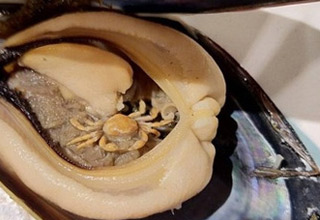
Like many great minds before them, the team at Donut Media have set out to answer an incredibly important question; one that has grave implications for humanity as we know it. Or maybe it’s not quite that important, but it is one that makes for an entertaining video: What happens when you install a lift kit on the cheapest truck on the market?
The truck, purchased from China for around $2,000, is, to put it generously, little more than a hunk of junk. The video opens with a largely unsuccessful attempt to drive the truck on a dirt road, which it does not like, making strange noises the entire time while traveling at a snail’s pace. It’s only once the truck starts going downhill that it travels at any significant speed, which can be attributed to gravity, not the truck’s abilities.
Thus, the need for a lift kit. The Donut guys bring the truck to the garage, and explain that the truck has a divorced setup, meaning the spring and shock are separated. Not terrible, but it doesn’t offer you as much tunability or performance as an independent suspension setup, which is more common.
They bought a set of shocks that cost almost as much as the truck itself and new springs, which are incredibly soft. The new springs are taller than the stock springs, affording them increased ground clearance and some more room for bigger tires, which the truck sorely needs (the tires it comes with are comically undersized).
After all of that work — and a lot more — the truck would turn on, but refused to go into drive. They bring in Gary Castillo, an EV expert, who finds the root of the problem: a faulty pedal that shorted when the wiring harness was mistakenly cut through.
Despite these setbacks, the team returns to their testing area to see how the truck runs. Their setup is incredibly DIY — their throttle is now a knob attached to a power controller which the passenger will control while the driver manages the brakes and steering wheel. If that wasn’t enough, reverse is now drive, and drive is now reverse.
But how does the truck actually handle after all that?
Despite all of their efforts, it drives slower than before, although it’s significantly faster in reverse. It did, however, handle the ruts and bumps in the road well, providing far more traction and ground clearance than on its initial test run. Their final test is to see if the truck can conquer the hill it couldn’t manage before, and the answer is: It cannot.
Their conclusion is that the truck needs a bigger motor to handle the new suspension, so stay tuned for that update. In the words of one commenter, “This isn’t the money pit we expected, but I kinda think it’s the Money Pit we secretly all want.”






1 Comments